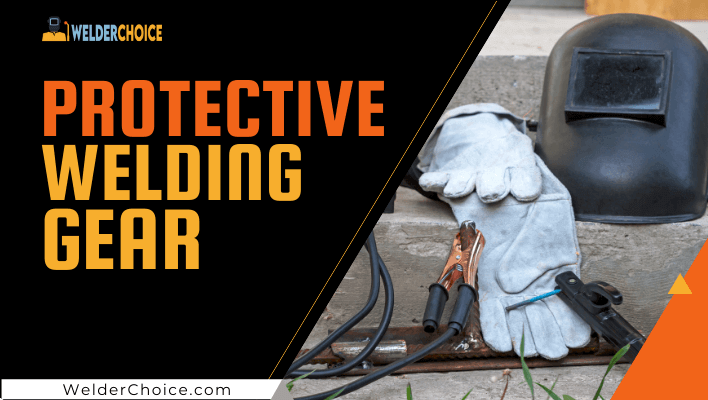Protective welding gear is important for the everyday job or a hobby. You need to protect your body so you can continue to work on the things you love.
To make things simple, we’ll break protection down by body region and go over some of the options.
We’ll cover the absolute necessities, some extra options, and where it’s applicable, we’ll point out alternatives.
When you’re buying protective welding gear, it’s worth making sure you’re covered for the type of work you do.
Protective Welding Gear
There are the following gears that protect you.
- Auto-Darkening Lenses & Helmets
- Glasses
- Respirators
- Jackets
- Welding Sleeves
- Aprons And Bibs
- Gloves
- Welding Chaps
- Kneepads
- Boots
Head
Your head and face are directly in the action when you weld and are almost always at risk.
You could suffer serious burns from sparks or molten metal, resulting in damage to your eyes or mouth.
The bright light put off by welding equipment can also cause immediate and irreparable damage to your eyes. To prevent these dangers, you’ll need a welding helmet, welding glasses, and respirators.
Auto-Darkening Lenses & Helmets
An auto-darkening welding helmet is one of the important protective welding gear that can protect you from dangerous sparks and metal. Helmets usually have the full face-covering element as well as a built-in lens.
Helmets come in a huge range of styles and looks and are one of the essential items in your toolbox.
A helmet with adjustable lenses is one of the best investments a welder can make. These auto-darkening helmets have built-in filters which adjust through a built-in sensor.
They’re battery-powered and often solar-charged. This means you won’t have to flip your mask up between welding jobs to see, saving you time.
When picking a helmet, consider the following: the type of lens, the weight of the helmet, comfort, and controls. Remember, you’ll be using this every day. Make sure you pick the one that will best protect you without being uncomfortable.
Our Suggestion: Lincoln Electric VIKING 3350
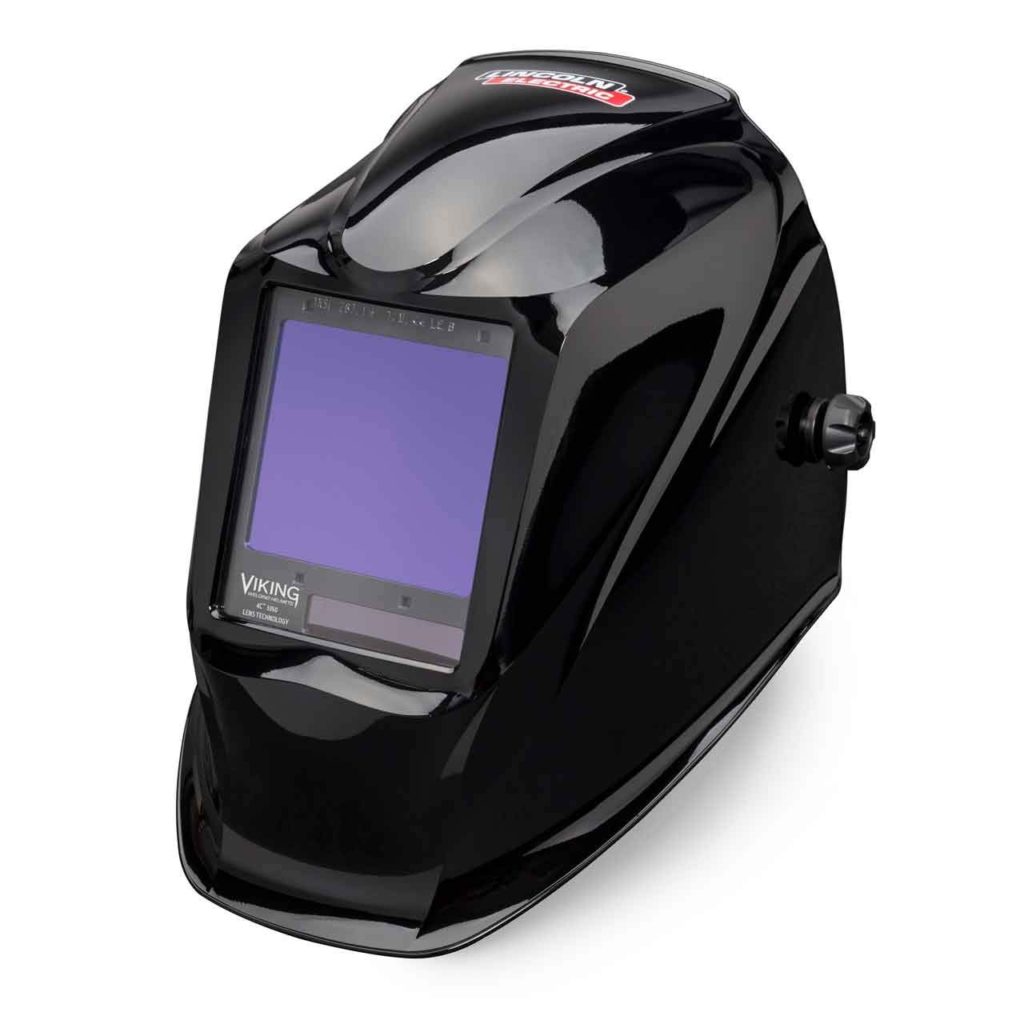
Glasses
Glasses don’t provide the full-face protection that masks do. But they may come in handy for certain situations.
Glasses are good for when you know the specific shade range you’ll need and are doing a job that may be difficult in a helmet. They’re also acceptable for certain plasma and torch-cutting jobs.
When using glasses, you’ll need to have other face and head protection. But glasses are great to have on projects where you need to wear a large respirator that won’t fit under a mask.
You won’t ever need both glasses and a helmet, but it’s good to have the glasses as a backup or for cutting jobs. We also would recommend not using glasses alone for welding jobs. Welders put out harmful UV rays, which can leave you with nasty sunburn on exposed parts of your face.
Our Suggestion: Miller Electric Shade 5.0 Welding Safety Glasses
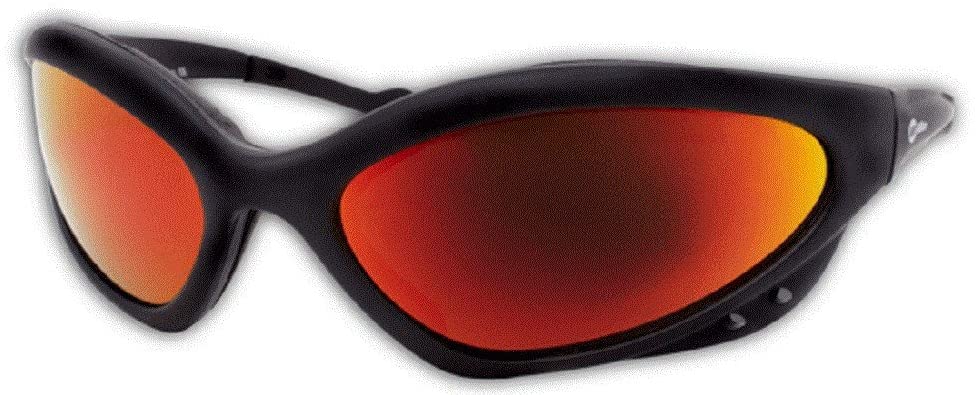
Respirators
A respirator is a crucial and often-overlooked piece of equipment.
Heated metals can release toxic gasses into the air – particularly magnesium and zinc fumes. These chemicals can cause asthma, Parkinson’s-like symptoms, hearing loss, and lung cancer.
People often skip the respirator because they can’t find a model that fits under their welding mask. Bad idea! Put the extra work into looking for small, low-profile respirators that fit your mask.
Improper respirator use is another danger. Respirators won’t work without the proper filters or air supply. Make sure the type of respirator you buy matches the types of materials you work with. And always check to make sure the respirator fits and seals, or else it won’t protect you at all.
Our Suggestion: 3M Half Facepiece Reusable Respirator 6300
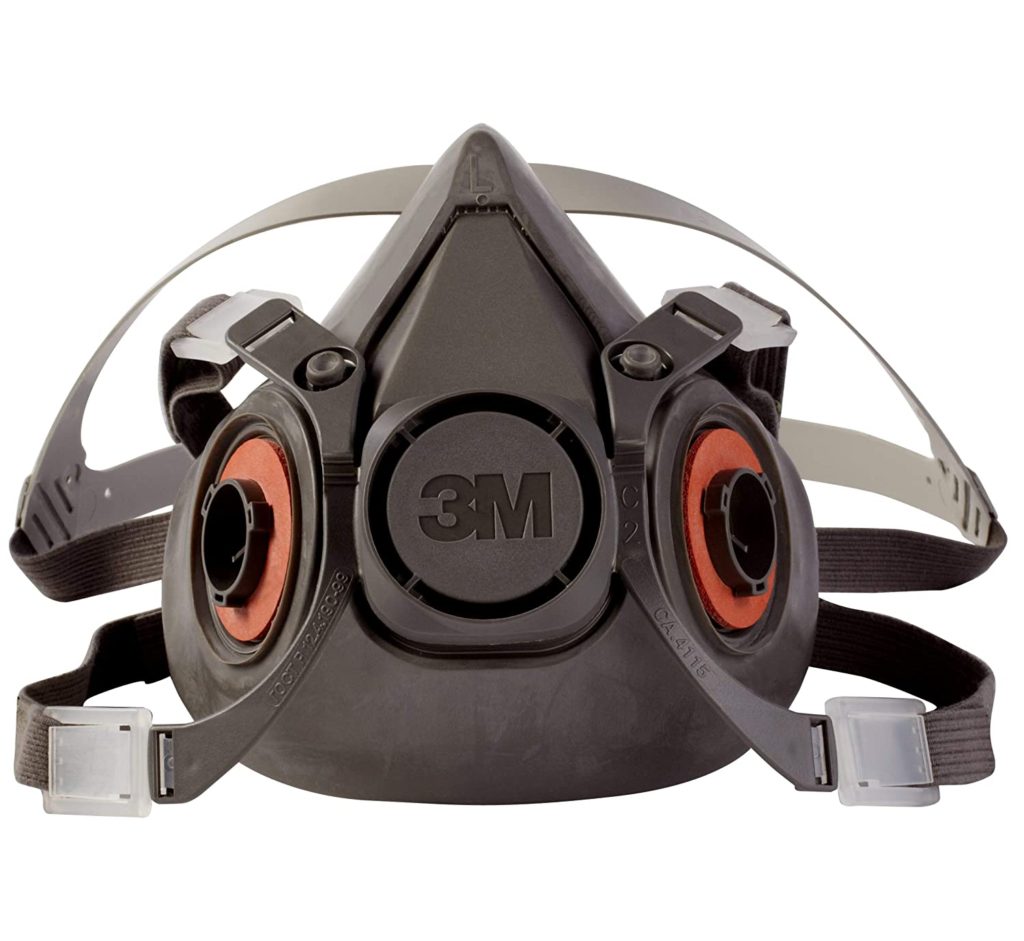
Chest, Arms, And Hands
Your arms, chest, and hands are closest to the line of fire for hot sparks and molten slag. You don’t want to sacrifice dexterity when you’re picking safety gear.
Depending on your work, you’ll need either a full welding jacket or a welding apron with separate welding sleeves. Gloves are always required for welding of any sort.
Jackets
Jackets are the all-covering, all-inclusive option for core protection.
A welding jacket should be a strong, fire-proof material. It is meant to protect your arms and torso from sparks, fire, heat, and metal.
The advantage of a good jacket is that a welding jacket protects areas that aprons don’t. Jackets cover the neck, shoulders, and back. A good welding jacket should be sturdy and fire-proof, regardless of the material.
Different materials make welding jackets good for any environment. There are cotton jackets that offer protection for hotter workshops. Wool or leather will be sturdier but warmer. Be sure to try some welding jackets so you can make sure the material isn’t too restrictive and fits well.
Our Suggestion: Miller Electric Men’s Classic Jacket
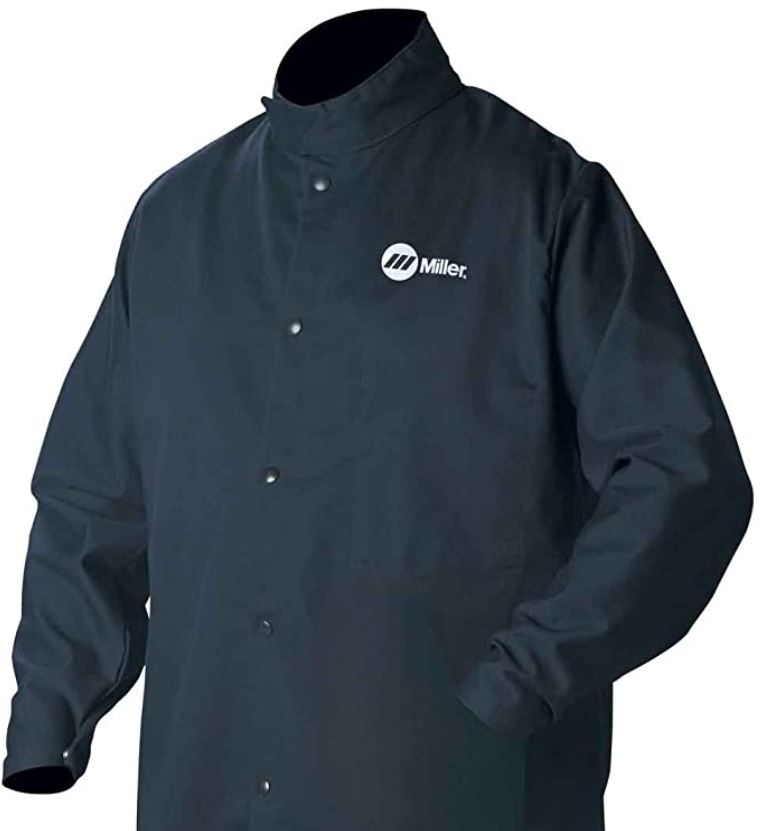
Welding Sleeves
Welding sleeves are a must-have for hot workshops and small jobs.
Welding sleeves serve a similar purpose to a welding jacket, except they only cover your arms.
Welding sleeves typically go from the wrist to above the shoulder, where they clip onto your shirt or apron. They have holes to accommodate gloves so that you are protected from your fingers to your arm.
You can also find sleeves that have built-in gloves called “welding gauntlets.” Welding sleeves are generally made redundant by welding jackets but should always be worn with aprons or bibs.
Welding sleeves are useful for welding jobs that are a quick one-and-done. It’s sometimes easier to toss on the gloves, apron, and sleeves than to suit up in a full jacket for a one-off weld.
Our Suggestion: Mechanix Wear MHS-05-500 Heat Sleeve
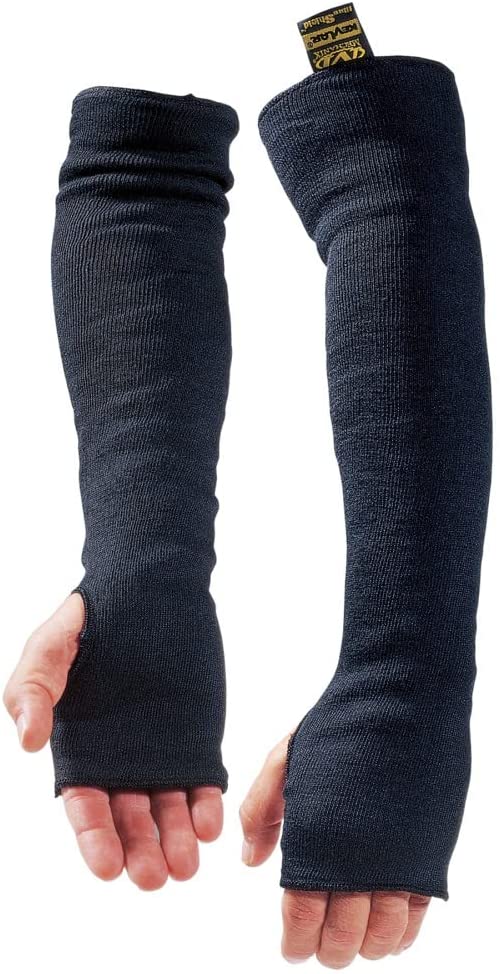
Aprons And Bibs
Aprons and bibs are great protection for summer welding work or hot workshops. They offer a good amount of coverage and plenty of breathing room.
Aprons also can be made of a heavier, sturdier material like leather and suede without losing mobility. Aprons also have the advantage of adding extra protection to your upper legs and lap area.
Aprons typically cover the full torso and part of the lower body. Bibs have a similar construction but don’t extend as far down.
Aprons and bibs also often have built-in utility pockets, which can be handy in the workshop.
Our Suggestion: Steiner 91266 Bib Apron
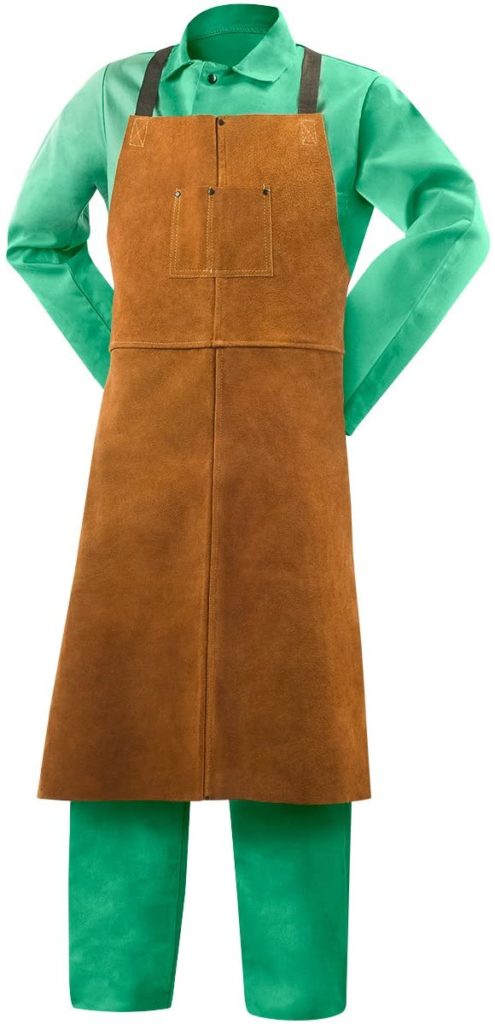
Gloves
It is finding the perfect pair of gloves is kind of like finding the perfect pair of pants. Sometimes it takes longer than you’d like, but once you find the right one.
So it’s worth the time you may have to put in to find the gloves that fit your hands right. They’ll give you good mobility and offer the most protection possible. This is especially important because your hands are the closest thing to the arc.
Studies have shown that more than 1 in 4 of all workplace accidents involve hand or finger injuries.
And almost all of those injuries are caused by people not wearing proper gloves. Damage to your hands can be life- and career-destroying, and hands are constantly at risk. Protect yourself in any way you can!
Our Suggestion: Lincoln Electric Traditional MIG/Stick Welding Glove
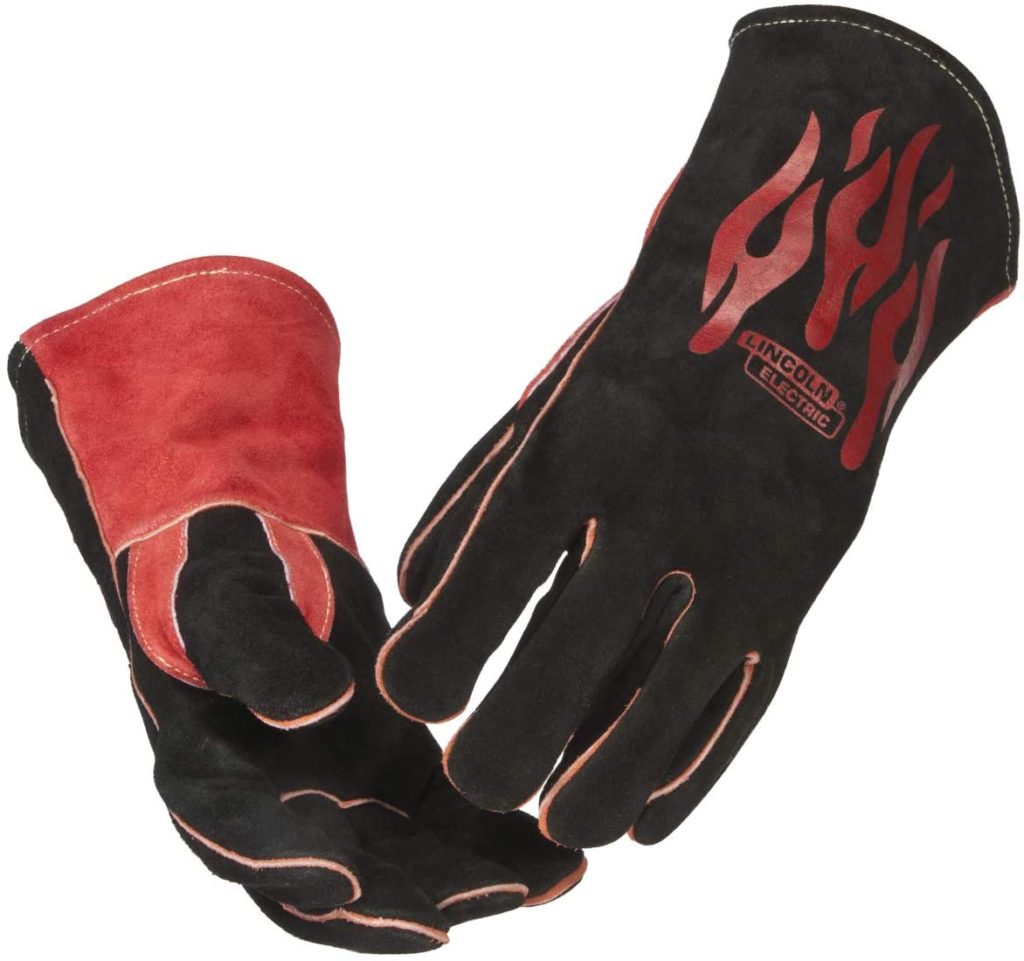
Legs And Feet
Although your hands, chest, torso, and face are often closest to your welder, the legs and feet are still at risk.
Any sparks or metal that get put off by the welder end up flying downward. Sparks, flames and hot metal can often settle on the feet or the legs, especially if you’re welding in a seated or crouched position.
There’s also the risk of falling pieces of metal or scrap after a weld-cut or if a weld fails. And if you find yourself stopping and crouching a lot at work, you may start to feel the strain in your knees as well.
These issues are all protected with different items. The most popular below-the-belt safety measures are welding chaps, kneepads, and boots.
Welding Chaps
Welding chaps offer protection to the legs and come in two forms: pants only or overall-style with an attached bib.
The overall-style chaps offer the combined coverage of an apron and a pair of standard chaps.
They’re a great investment if you think the idea of separate pants and apron may be too restrictive, hot, or bulky.
Standard welding pants are better if you like the functionality of an apron and don’t want two bibs.
Chaps come in either lighter, breathable cotton fabric or strong leather, with synthetic options as well.
The other thing to consider is whether you want full or partial leg covering. Some welding chaps will only come a bit below the knee, while others cover all the way to the ankle. This may be worth considering if you work in an especially hot or stuffy environment.
Our Suggestion: Side Split Cowhide Chaps (40”) – Revco
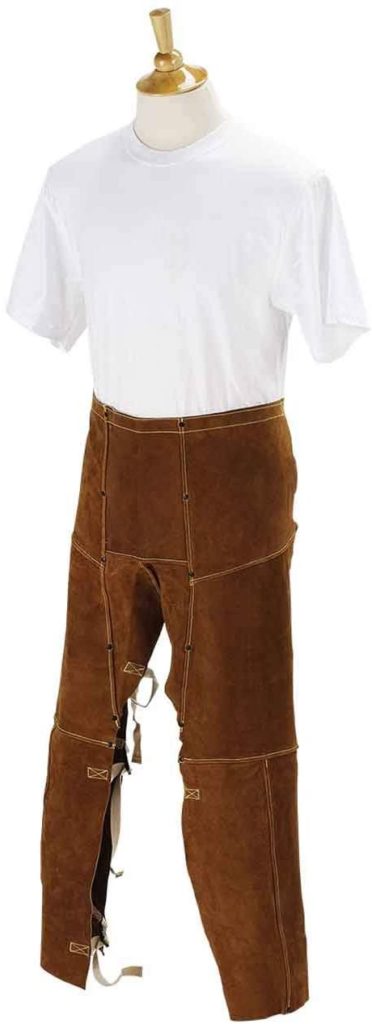
Kneepads
Knee damage and knee strain is an underrepresented problem in the welding industry.
You may hear the old, seasoned guys talking about their knee troubles around the water cooler. But it’s hard on the top of people’s list for personal safety.
Being a welder means you may be kneeling for hours a day, usually in less than comfortable places. Kneepads will protect your knees from added pain of rough concrete or sharp rocks. They can also offer added protection from stray pieces of scrap that may fall during a project.
Kneepads are usually flexible strap-on constructions with cushioning and hard protective components. Good kneepads should have a good protective layer of hard plastic or leather. The inside should have a good cushioning layer without sacrificing flexibility. There are also some welding chaps/pants that have a built-in kneepad option.
Our Suggestion: KP Industries Ultra Flex Iii Kneepads

Boots
While spending time on your knees is a pain, you’ll be spending even more time on your feet while you work. But comfy shoes aren’t enough.
Welders should have shoes to protect them from heat, fire, sparks, impact, and live wires. This is why welding boots must be shock-resistant and made of leather.
Leather is sturdy, non-conductive, and heat-resistant. This makes it the ideal material for protective boots. But as an added measure of safety, boots should have steel caps (sometimes called steel toes) to protect against impact.
Welding floors have sharp scrap as well, so good protective boots need pierce-resistant soles.
As always, comfort and mobility should be considered alongside the protective qualities. Happy feet will make a long day’s work much, much easier.
Our Suggestion: Dr. Martens Men’s Ironbridge MG ST Steel-Toe Met Guard Boot
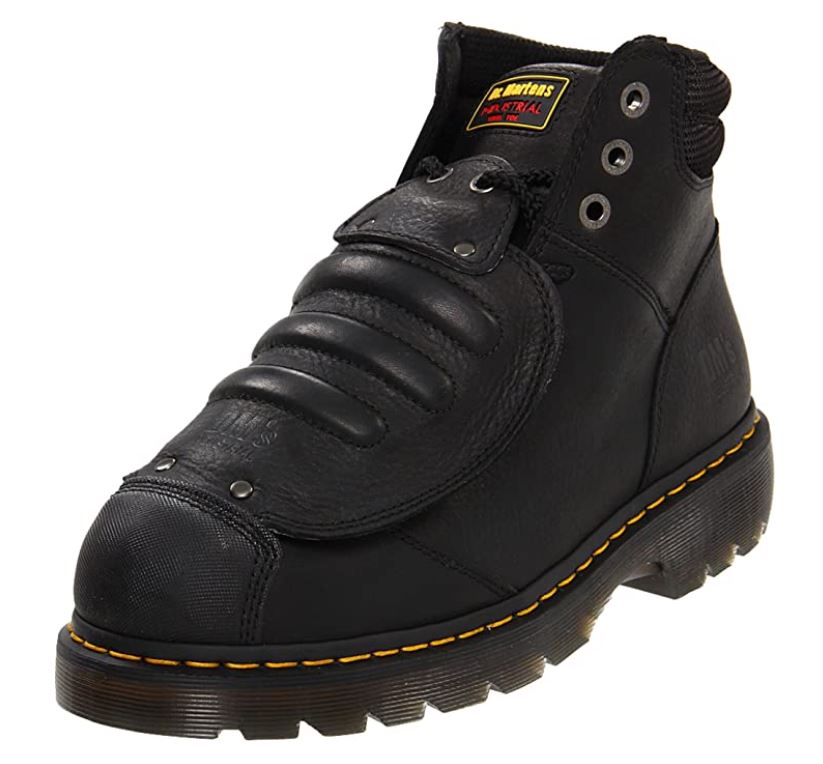
Safety Equipment
Welding can be a dangerous task.
Accidents can quickly become catastrophic. Improper use of equipment is dangerous to both the operator and the people around them.
Having the right safety equipment is the keystone to proper safety procedures. What kinds of protection you need isn’t always clear–it may look different from person to person or vary from job to job.
This article will take a look at the various types of welding safety equipment (also called Personal Protective Equipment or PPE) on the market.
We’ll talk about what combinations work the best and how you can make sure you stay covered from head to toe.
Protection From Head To Toe
Protecting yourself means considering every part of your body you put at risk when you weld. This means covering the obvious things like your eyes, hands, and face.
But you also need to consider things that may not be so obvious, like your lungs or your legs.
With welding, there is the danger of inhaling toxic gases, sparks, molten metal – the list goes on and on.
FAQs
What to wear for welding?
What you want to wear for welding is personal protection equipment (PPE) such as:
- welding helmets
- gloves
- welding pants
- knee pads
- aprons/bibs
- sleeves
- welding jackets
What are the welding accessories?
The most popular welding accessories include chipping hammers, wire brushes, dusk masks, angle grinders, and gas nozzles.
Conclusion
Hopefully, this comprehensive overview of protective welding gears helps you have a better idea of what you need to stay safe. Not all jobs will need the same type of protective gear.
Consider mixing and matching different items to see what works best for the jobs you do.
Remember to put safety first when working with dangerous equipment. Always make sure that your safety gear is being used properly and fits right.
And remember that you should find the gear that is comfortable, but never at the expense of the best protection.
